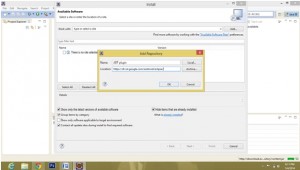

#ECLIPSE IDE ANDROID ANDROID#
To me, Android Studio seems more natural but it takes some time to get used to if you have been using Eclipse for a long time. Each of these modules can have their own Gradle build files and declare their own dependencies. Your app could be2 one module, a library that you just downloaded can be another and the Ad SDK you are currently integrating could be a third. Android Studio treats this situation differently by introducing the concept of modules.

If you want to switch to a project in a different workspace, then you have to restart the whole IDE. When Eclipse starts, you select the workspace that contains your projects and you can load all project of that workspace in your tree navigation.

If you’ve used Eclipse then you must be familiar with the concept of workspaces. Project Organizationīoth IDEs work differently in an effort to help you manage and organize your projects. The new interface design too in Android Studio is faster, responds to changes more rapidly and has more customization options that with Eclipse, you had to manually set in the XML. After working with it for some time, it’s clear that the new tool is much better than the old. One of the main selling point Google used to market Android Studio when it came out was its completely redesigned user interface design tool. In addition, in my opinion IntelliJ’s Java auto completion seems more “intelligent” and predicts better what I want to do so there is definitely an improvement in this area over Eclipse.
#ECLIPSE IDE ANDROID CODE#
Android Studio can refactor your code in places where it’s just not possible using Eclipse and ADT. Advanced Code Completion/Refactoringīoth IDEs feature the standard Java code auto completion but in the case of Android Studio, Google has baked in deeper support for specific Android code and refactoring. Eclipse on the other hand uses Apache Ant as its main build system which a very robust XML based build system that many Java developers may already be familiar with. It builds on top of the concepts of Apache Ant and Apache Maven but it also introduces a Groovy DSL (Domain-Specific Language) that allows for scripted builds which opens up many automation possibilities like uploading your beta. Android Studio utilizes the fast growing Gradle build system.


 0 kommentar(er)
0 kommentar(er)
